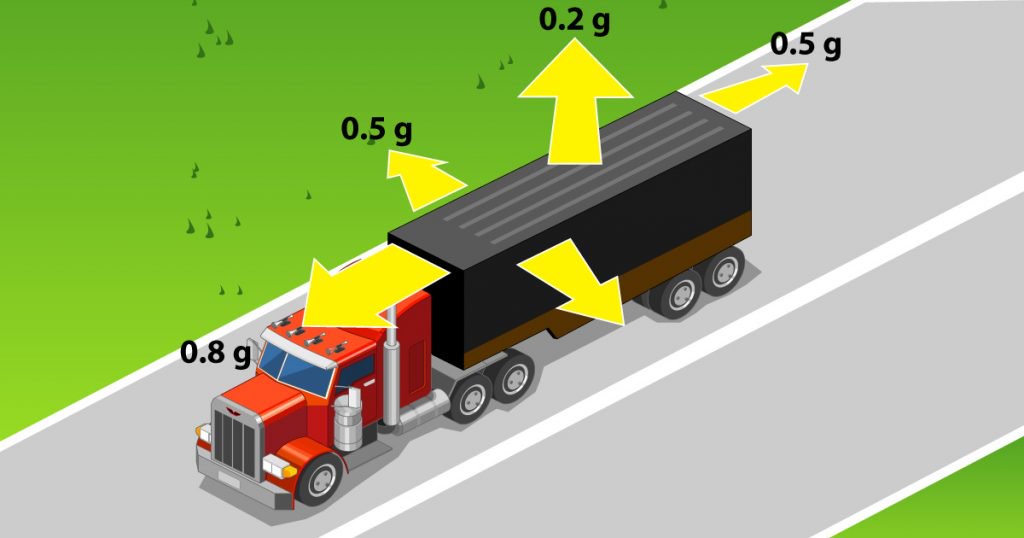Imagine an 80,000 pound truck losing its load on a busy highway! No one wants to be behind a truck with cargo that looks like it’s about to fall off! That’s why it’s important to follow the FMCSA’s cargo securement standards, so everyone is safe on the road.
To be compliant, your cargo needs to be able to handle these forces:
- Forward Force: 0.8 g (gravity) deceleration in the forward direction. This is force from braking when driving straight ahead.
- Rearword Force: 0.5 g acceleration in the rear direction. This is force from acceleration, shifting gears or braking in reverse.
- Sideways Force: 0.5 g acceleration in the lateral direction: This is force applied when turning, changing lanes or braking while turning
- Upward Force: 0.2 g acceleration in the upward direction: This is force applied when going over bumps in the road or cresting a hill.
Cargo Securement Tools to Use
You can use any combination of these items to firmly secure your cargo. What you use will vary based on what your cargo is.
- Dunnage: These are loose materials used to support and protect cargo, like pieces of wood or matting.
- Dunnage bags: Also called inflatable bags, dunnage bags are used to fill space and secure cargo.
- Tiedowns: Ropes, cords, straps or chains are all examples of tiedowns.
- Chocks and wedges: If you’re hauling cargo that’s likely to roll, you’ll want to use these wedges or blocks to keep them stationery.
Best Practices for Tiedowns
If you use tiedowns, check that they’re secure before you hit the road and make sure they won’t come undone. If you can see the tiedowns, use edge protection to keep them from rubbing or cutting against your cargo. The FMCSA requires tiedowns and other cargo security items to be located inboard of the rub rails, if possible.
The number of tiedowns you need depends on your cargo size and weight. .
- 5 feet long or less and 1,100 pounds or less = 1 tiedown
- 5 feet long or less and more than 1,100 pounds = 2 tiedowns
- Greater than 5 feet long, but less than 10 feet = 2 tiedowns
- Greater than 10 feet = 2 tiedowns, with 1 additional tiedown for every additional 10 feet
Special Purpose Vehicles
If you haul irregularly shaped cargo like steel or concrete beams, crane booms, girders, or trusses, you’ll need to follow the specific guidelines for your type of cargo.
The FMCSA has detailed information on specific requirements for special cargo, so check their site if you haul these or other irregularly shaped cargo:
- Logs and dressed lumber
- Metal coils
- Paper rolls
- Concrete pipe
- Intermodal containers
- Automobiles
- Light trucks and vans
- Heavy vehicles/equipment/machinery
- Flattened/crushed vehicles
- Roll-on/roll-off containers
- Large boulders
Following cargo securement rules helps keep your equipment in proper working condition and your load secure. Remember if something feels wrong, pull over and check it out right away. Pay attention to any cuts, cracks or other signs of weakness in your equipment. The most important thing is you reach your destination safely.
Call 855-369-APEX (2739) to see how our startup, freight factoring and fuel programs can help you keep more money in your trucking company where it belongs. Thanks to our friends at Higginbotham for the great tips!
